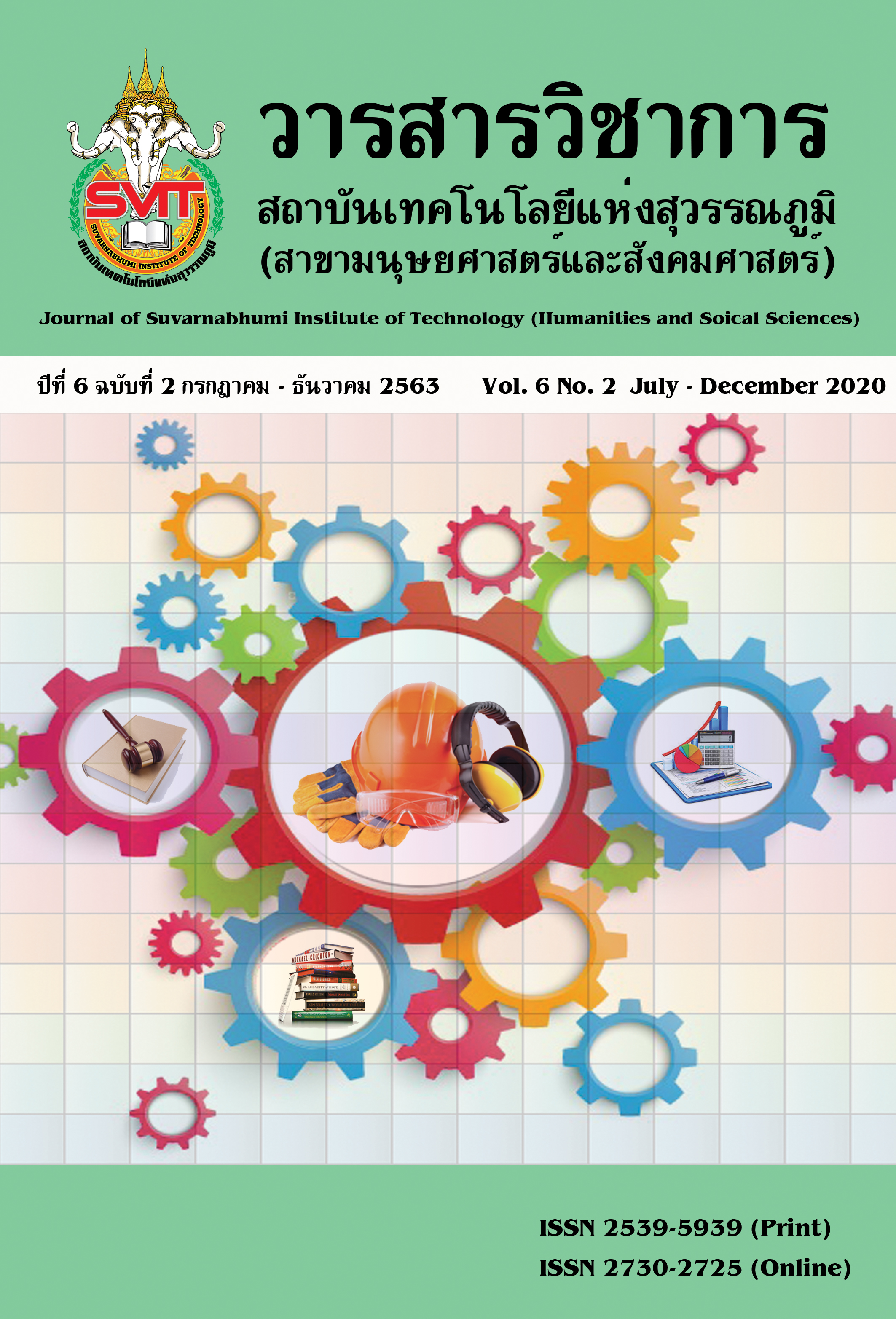AGING IN PLACE
Keywords:
Elderly, Residential, Environmental management, Housing for the elderlyAbstract
The Thai population is likely to be growing at a very rapid rate. For Thailand to entire "The Elderly Society" in 2030, the government has to hasten the policy and find measures to support the aging society to prepare active Aging. One of them as "Housing allocation policy" because it is one of the key factors in living and related to the quality of life of the elderly directly. The concept of Aging in Place is another concept that focus on housing care so that older people can stay in the same place for longer by creating a habitat-environment and suitable housing for the elderly, enabling a favorable environment and friendly to the elderly living in the original habitat or community or share with family members, relatives, familiar societies. That development and encourage older people to become active members of society. Also, taking into consideration safety. The focus is on preventing and reducing potential accidents. It is a good health. The elderly can live or yourself no need to change status to depend on family or lineage to care for the future.
References
กลุ่มอนามัยผู้สูงอายุ สำหรับส่งเสริมสุขภาพ กรมอนามัย. (2556). รายงานการสำรวจสุขภาวะผู้สูงอายุไทย ปี 2556 ภายใต้แผนงานส่งเสริมสุขภาพผู้สูงอายุและผู้พิการ (ครั้งที่ 1). กรุงเทพฯ: โรงพิมพ์วัชรินทร์ พี.พี.
คณะสถาปัตยกรรมศาสตร์ จุฬาลงกรณ์มหาวิทยาลัย. (2556). ข้อแนะนำการออกแบบสภาพแวดล้อมและที่พักอาศัยของผู้สูงอายุ. กรุงเทพฯ: หน่วยวิจัยสภาพแวดล้อมที่เหมาะสมกับผู้สูงอายุ ภาควิชาเคหะการ คณะสถาปัตยกรรมศาสตร์ จุฬาลงกรณ์มหาวิทยาลัย.
ไตรรัตน์ จารุรัตน์ และทิพวัลย์ ทองอาจ. (2557). Universal design การออกแบบเพื่อการใช้งานของคนทุกกลุ่มในสังคม. สืบค้นเมื่อ 21 พฤศจิกายน 2557, จาก http://www.nstda.or.th/nac2013/ download/presentation/Set4/NT-106-02/03Trirat.pdf
มูลนิธิสถาบันวิจัยและพัฒนาผู้สูงอายุไทย. (2557). รายงานสถานการณ์ผู้สูงอายุไทย พ.ศ. 2557. กรุงเทพฯ: มูลนิธิสถาบันวิจัยและพัฒนาผู้สูงอายุไทย.
ศศิพัฒน์ ยอดเพชร. (2544). สวัสดิการผู้สูงอายุ. กรุงเทพฯ: โรงพิมพ์จุฬาลงกรณ์มหาวิทยาลัย.
สุชน ยิ้มรัตนบวร. (2558). ปัจจัยที่มีผลต่อความเป็นไปได้ในการออกแบบอาคารพักอาศัยรวม กรณีศึกษา: Baron Residence ย่านบางกะปิ. Veridian E-Journal Silpakorn University, 8(3), 1269-1283.
สุภารัตน์ ชัยกิตติภรณ์, สมปรารถนา สุขเกษม, และวัชรินทร์ เสมามอญ. (2556). การมีส่วนร่วมในการพัฒนารูปแบบการจัดอุปกรณ์อำนวยความสะดวกและสภาพแวดล้อมที่ปลอดภัยสำหรับผู้สูงอายุ (ปีที่ 2). มหาวิทยาลัยราชภัฏพระนครศรีอยุธยา: พระนครศรีอยุธยา.
สำนักนโยบายและยุทธศาสตร์ สำนักงานปลัดกระทรวงสาธารณสุข. (2557). นโยบายและแผนกระทรวงสาธารณสุข. สำนักงานปลัดกระทรวงสาธารณสุข กระทรวงสาธารณสุข.
อันธิกา สวัสดิ์ศรี. (2561). สจล. นำเทรนด์สร้างสังคมสูงอายุอย่างมีคุณภาพหนุนรัฐผลักดัน Aging in Place – ชราในถิ่นที่อยู่. สืบค้นเมื่อ 14 กุมภาพันธ์ 2561, จาก https://www.ryt9.com/s/prg/2782606
Hooyman, Nancy, & Kiyak, H., Asuman. (1996). Social Gerontology. Asimont Schuter Company: Needham Heights.
Suttichai Jitpankul. (2001). Elderly in Thailand: An extensive review of current data and situation, policy and research suggestion. Bangkok: Thailand Research Fund.
Downloads
Published
Issue
Section
License
บทความที่ได้รับการตีพิมพ์เป็นลิขสิทธิ์ของวารสารวิชาการ สถาบันเทคโนโลยีแห่งสุวรรณภูมิ
ข้อความที่ปรากฏในบทความแต่ละเรื่องในวารสารวิชาการเล่มนี้เป็นความคิดเห็นส่วนตัวของผู้เขียนแต่ละท่านไม่เกี่ยวข้องกับสถาบันเทคโนโลยีแห่งสุวรรณภูมิ และคณาจารย์ท่านอื่นๆในสถาบันฯ แต่อย่างใด ความรับผิดชอบองค์ประกอบทั้งหมดของบทความแต่ละเรื่องเป็นของผู้เขียนแต่ละท่าน หากมีความผิดพลาดใดๆ ผู้เขียนแต่ละท่านจะรับผิดชอบบทความของตนเองแต่ผู้เดียว





